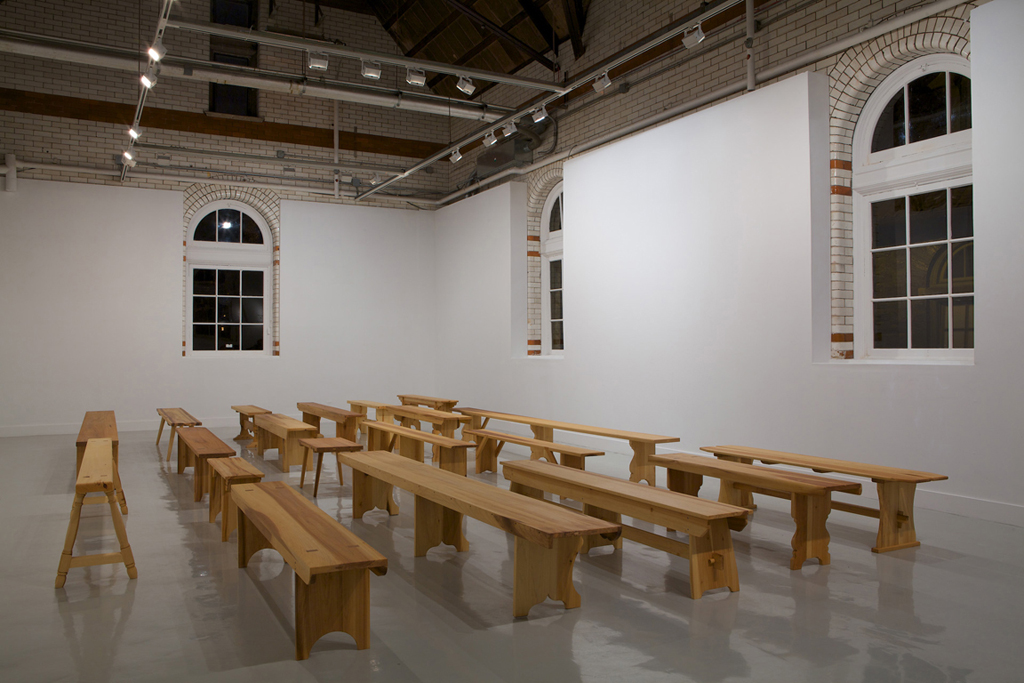poplar, text
Utopian Benches is about communalism as opposed to individualism. A bench is a seat that we share; it is also non-hierarchical, we sit at the same level. For the project I remade benches that were, for the most part, made for and/or used by communal societies. There are twenty benches in the gathering in its current state. During the exhibition the benches are used to hold meetings on apposite subjects.
To date I have reconstructed twenty-five benches using available examples and measured drawings. The focus of the work is the nineteenth century American intentional communities, particularly those with a craft tradition, most famously the Shakers, but also the Amana Inspirationists, the Zoar Separatists and the Harmony Society. My intention is for the benches, as shared seating, to represent community and, as examples of craftsmanship, to propose a reconsideration of value. The project also aspires to address the legacy of resistance to capitalist-driven individualism that formed the founding ideals of American groups once referred to as “communisms” and “socialisms”. As such, it advocates ways in which an increasingly outmoded category of furniture, the bench, might be instrumental in exploring the importance of community and collective ownership.
As part of its effort to examine the local as a site of opposition to the global, the exhibition of the benches, wherever possible, includes benches from intentional communities within the immediate region of the exhibition site. For its first appearance at Arcadia University (ten miles north of Philadelphia), these ranged from Ephrata Cloister (founded in 1732), to the contemporary Camphill Village Kimberton Hills (founded in 1972). In addition a number of benches were included from the local vernacular woodworking tradition, the Pennsylvania German. (Please see link below to exhibition booklet for a list of benches). The benches are constructed from poplar grown locally to my studio in Narrowsburg, New York.
The benches are used to propose a site of meeting, discussion and social idealism embodied by the form itself. This will include the programming of meetings open to the general public at each venue. Following a format established by the Quakers, I suggest each of these gatherings be focused around a different topic pertinent to the project, and moderated by a proponent or proponents in the given field. Possible subjects include “utopia”, “the local”, “community”, and “the value of things.” Conversation leaders will sit on the benches in among the other participants. The benches themselves will be arranged longitudinally in the room (facing each other as opposed to hierarchically facing a dais or altar at one end).
The project is tailored in collaboration with the partner(s) to each local, both through the choice of discussion subjects, and through the inclusion of local communes, materially, with additional benches, textually, in the exhibition booklet, and actually by their participation in meetings (if they so choose).
ACCOMPANYING PUBLICATIONS: The exhibition is supported by a small illustrated booklet containing information about each community from which the benches were sourced and available at no charge to visitors. The second section of the booklet “Communal Societies Local to this Site” is rewritten by and for each exhibition site.
A fuller text We Sit Together, Utopian Benches from the Shakers to the Separatists of Zoar, published with the Princeton Architectural Press, extends the descriptions of the communities and includes measured drawings for individual benches, as well as both installation and detailed photographs.
EXHIBITION SITES: Utopian Benches was first exhibited at Arcadia University Art Gallery, November – December, 2011.
Then at the ICA, Portland ME in June 2012; the Tang Museum at Skidmore College in September, 2012; Murray Guy, NY in July 2013; and the San Francisco Art Institute, January 2014.
“A Small Gathering of Utopian Benches” has been exhibited at Franklin Street Works, Stamford, CT; Art Sites, Riverhead, NY; Wellspring Gallery, Camphill Village Kimberton Hills, PA; the Museum of Art and Design, New York in the traveling exhibition Against the Grain; Shaker Museum Mount Lebanon; Steirischer Herbst, Graz, Austria; along with the twelve Bancs d’Utopie, at Le Familistère de Guise, France; and at the Cathedral of St John the Divine, New York as part of the exhibition Sanctuary.
My thanks to Richard Torchia, director, and the staff and interns of the gallery at Arcadia University, for their help in realizing the project.
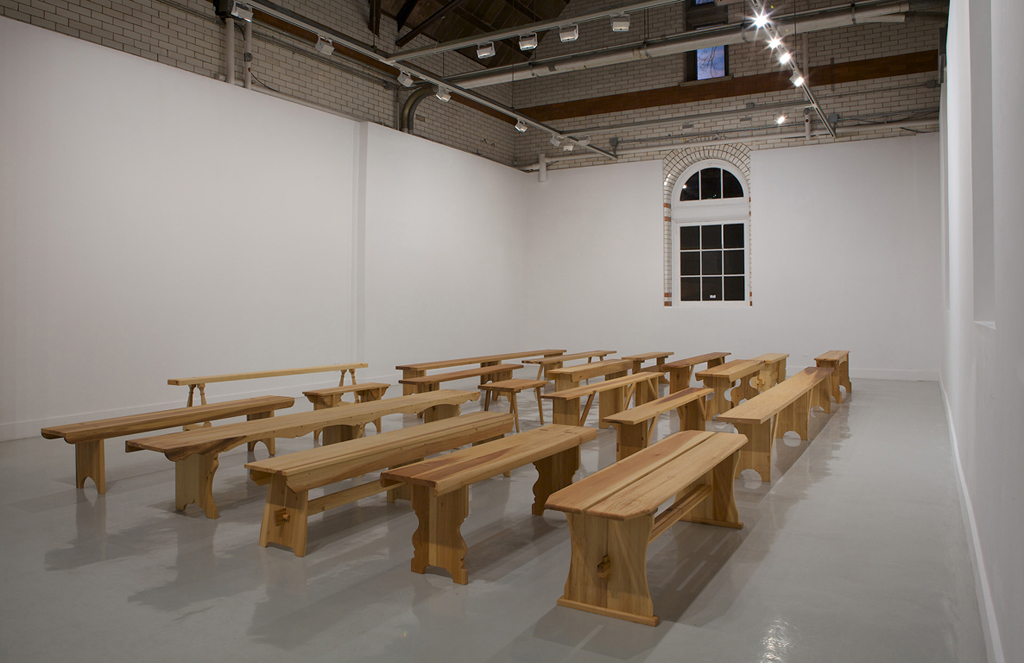 Installation at Arcadia University, 2011. Photo courtesy Aaron Sigler
Installation at Arcadia University, 2011. Photo courtesy Aaron Sigler
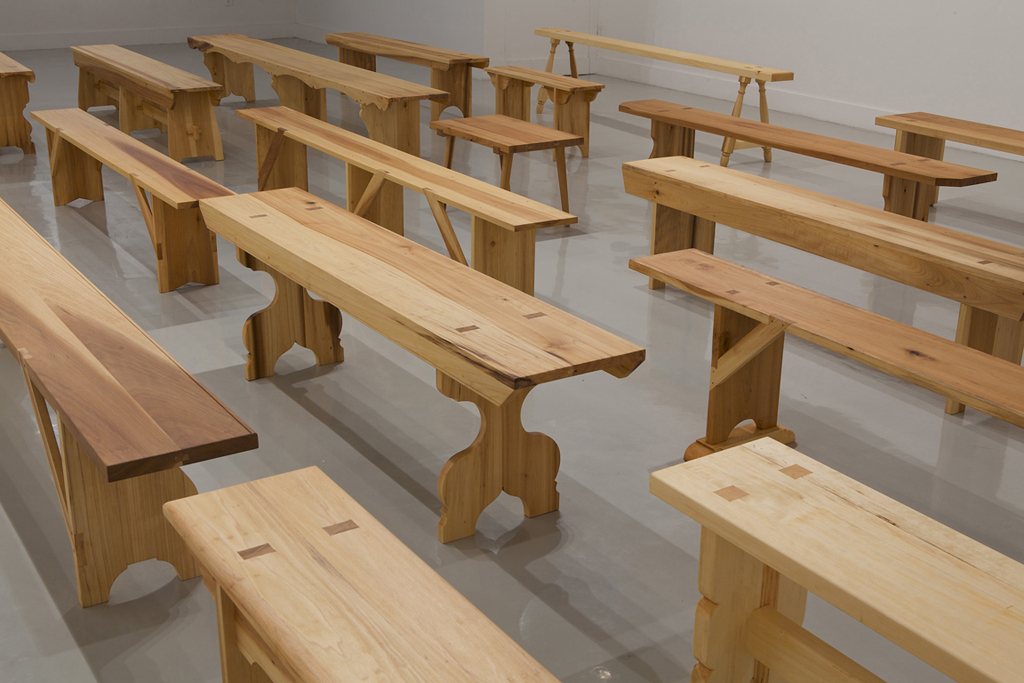 Detail of installation at Arcadia University, 2011. Photo courtesy Aaron Sigler
Detail of installation at Arcadia University, 2011. Photo courtesy Aaron Sigler
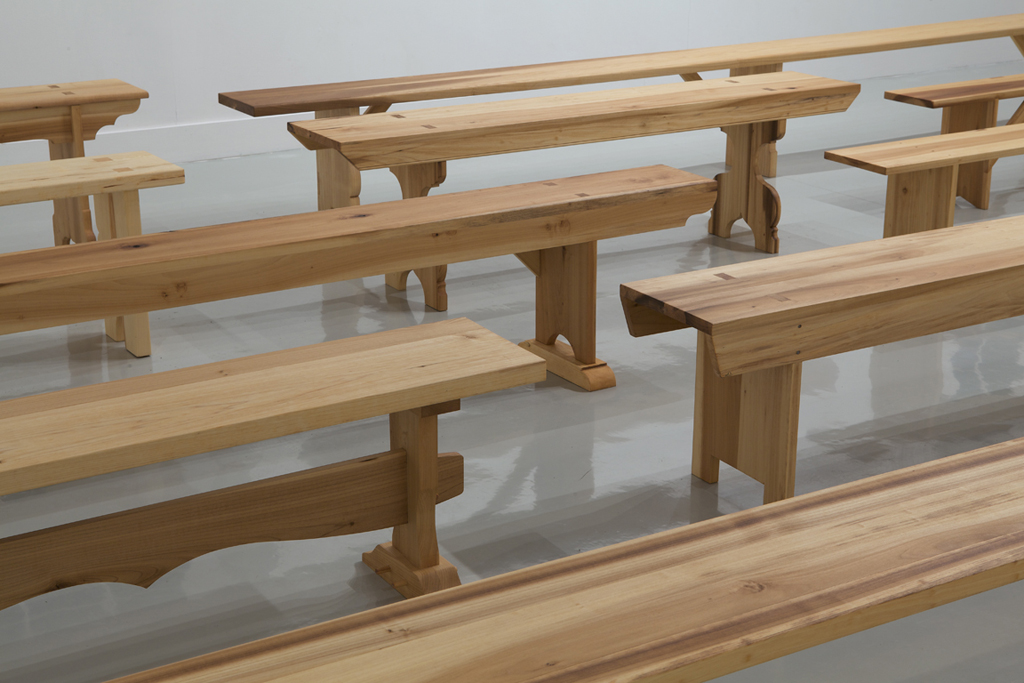 Detail of installation at Arcadia University, 2011. Photo courtesy Aaron Sigler
Detail of installation at Arcadia University, 2011. Photo courtesy Aaron Sigler
 Detail of installation at Arcadia University, 2011. Photo courtesy Aaron Sigler
Detail of installation at Arcadia University, 2011. Photo courtesy Aaron Sigler
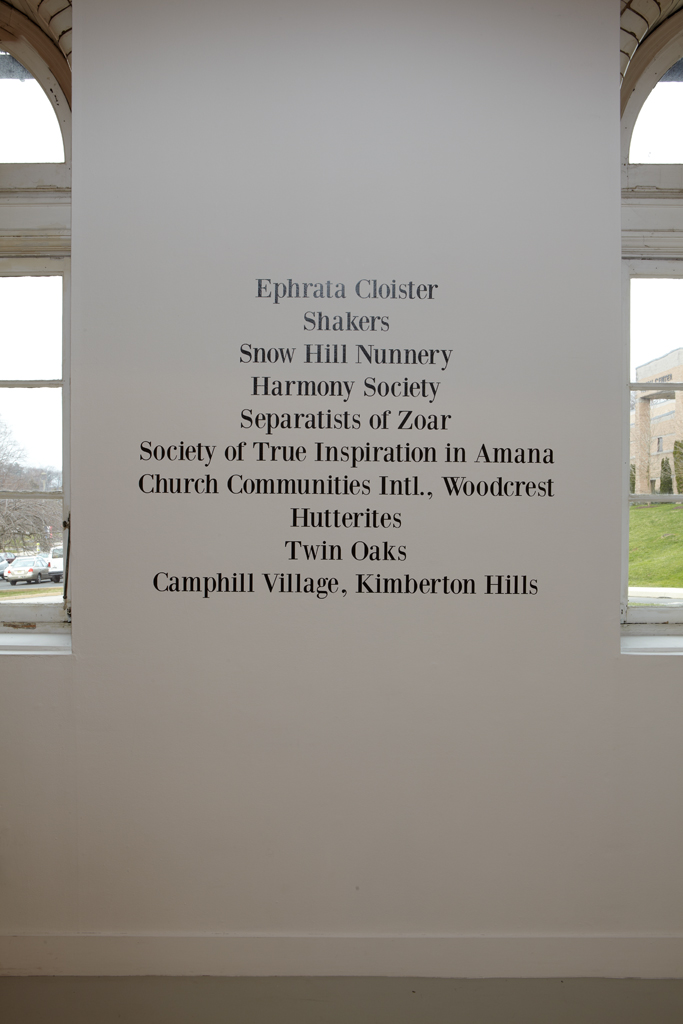 Signage at installation at Arcadia University, 2011. Photo courtesy Aaron Sigler
Signage at installation at Arcadia University, 2011. Photo courtesy Aaron Sigler
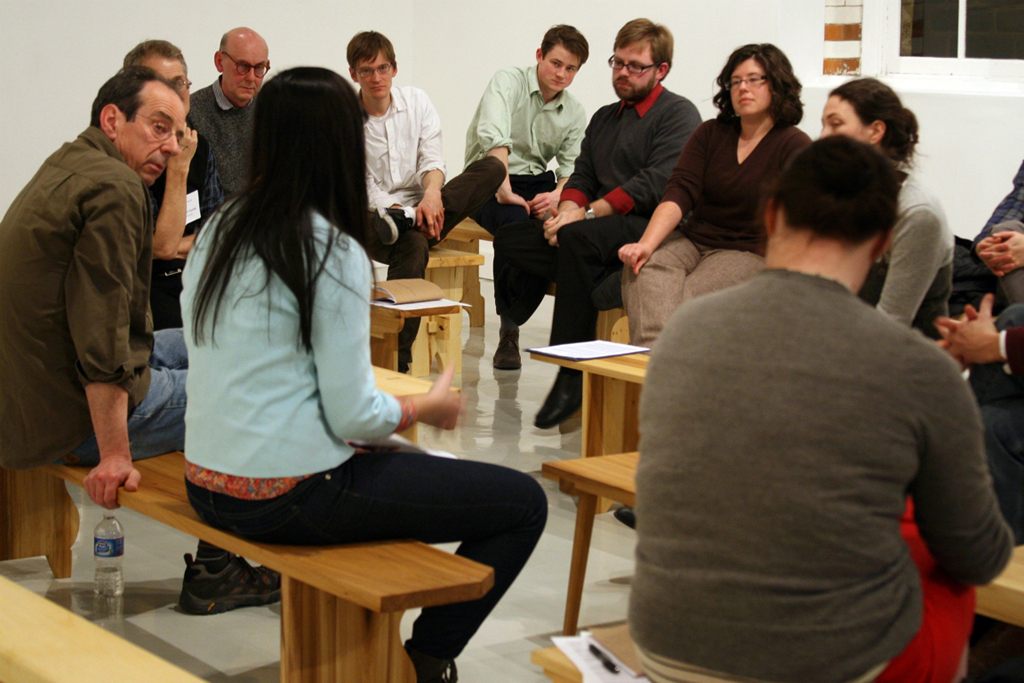 Conversation held on the benches at Arcadia University
Conversation held on the benches at Arcadia University
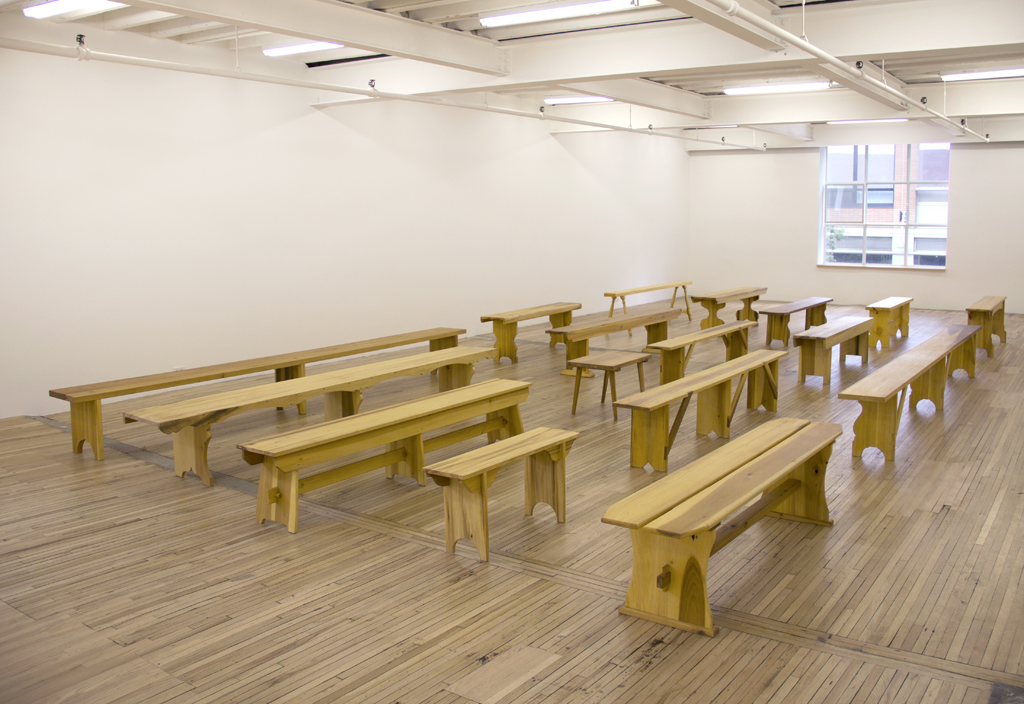 Utopian Benches Installation at Murray Guy, New York, 2013. Photo courtesy Murray Guy
Utopian Benches Installation at Murray Guy, New York, 2013. Photo courtesy Murray Guy
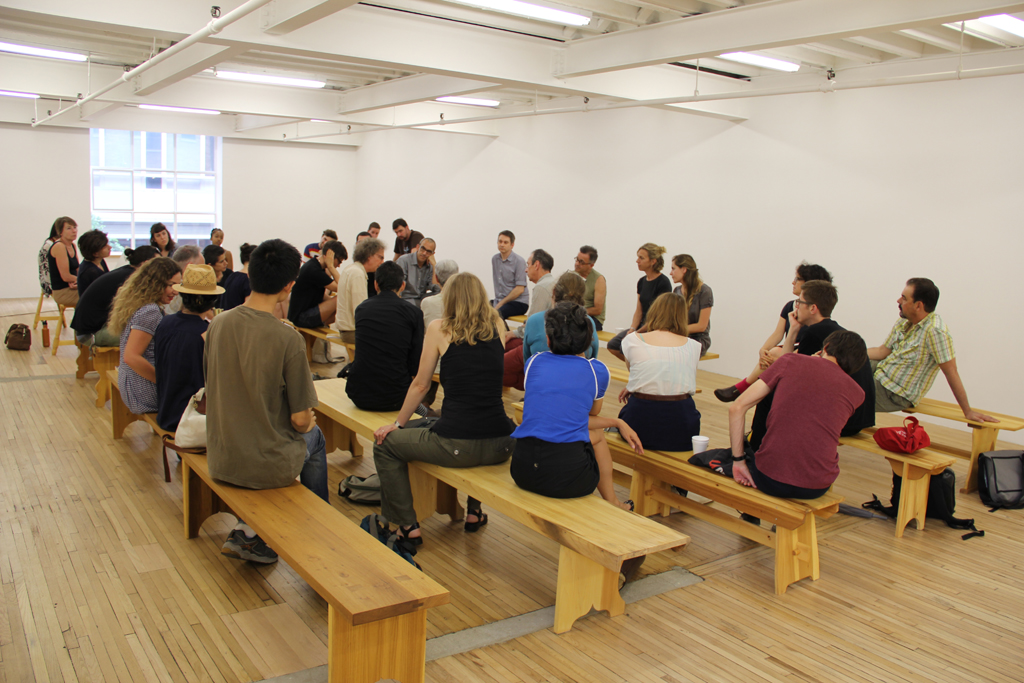 Conversation on the benches, Murray Guy, New York, 2013
Conversation on the benches, Murray Guy, New York, 2013
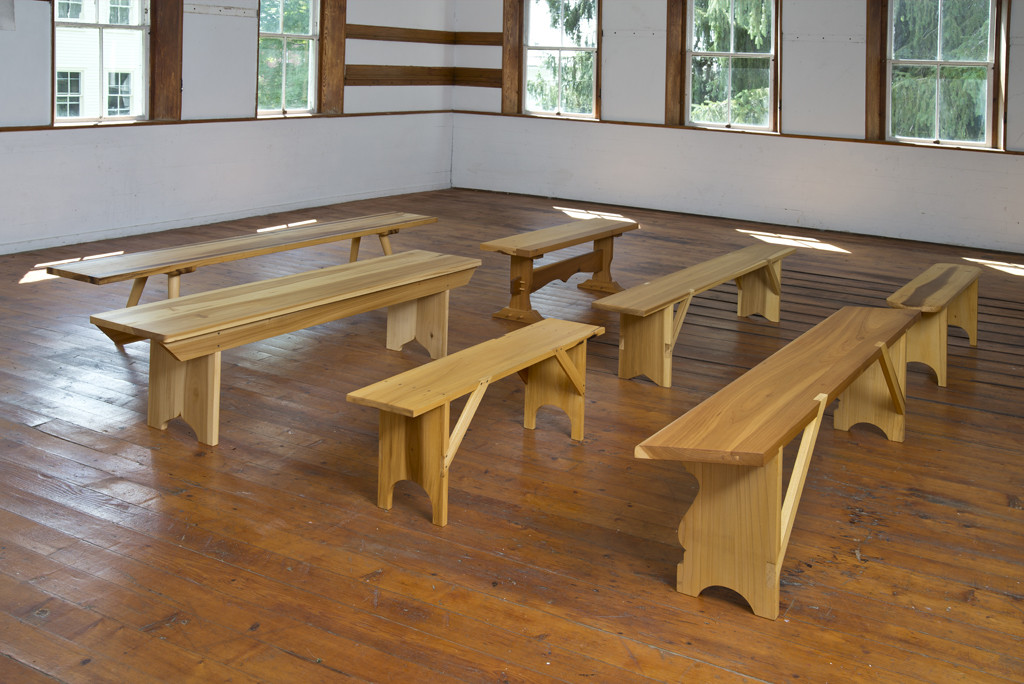 Seven Utopian Benches at Mount Lebanon Shaker Village, New York, 2014
Seven Utopian Benches at Mount Lebanon Shaker Village, New York, 2014

